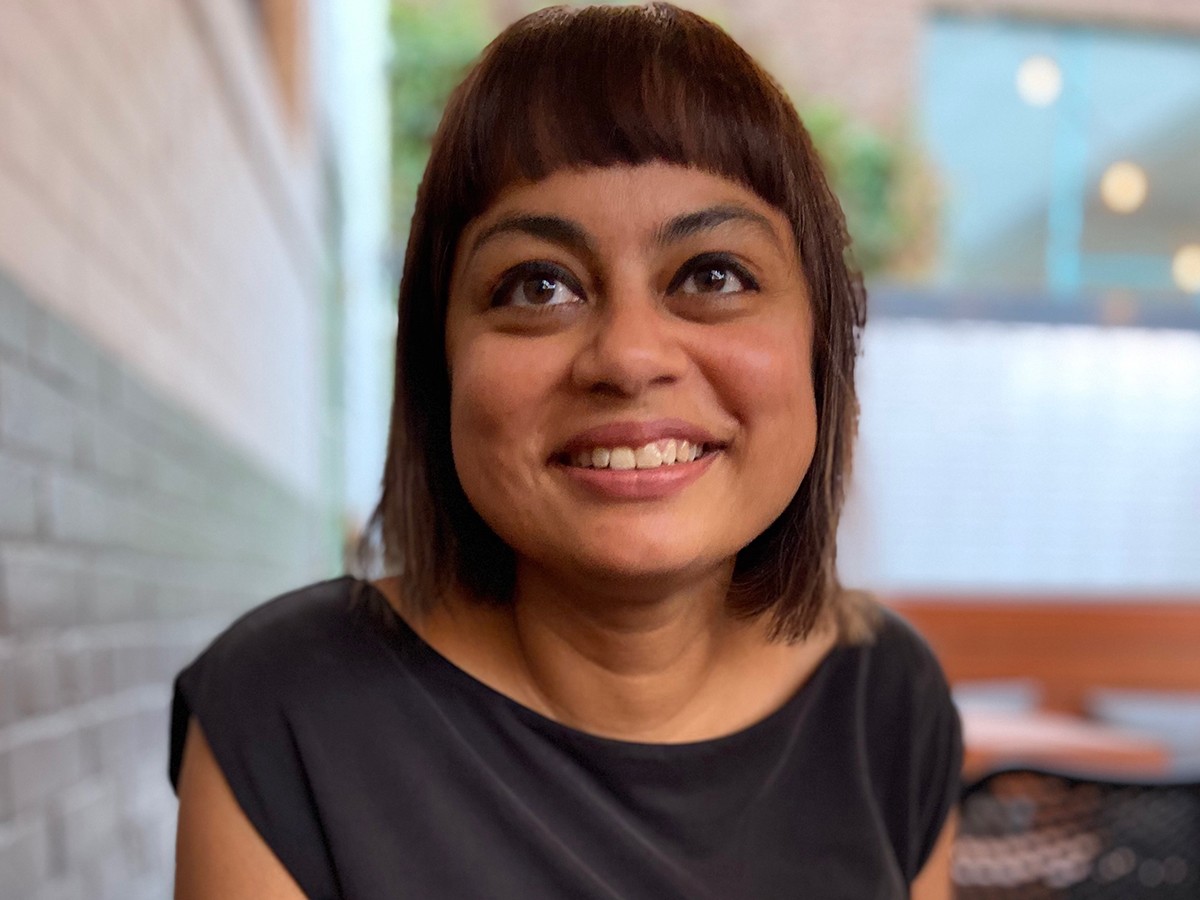
Asmaa Malik
| Education |
| BA (English) |
| MA (Journalism), University of Maryland |
| Courses |
| NNS 419: Journalism and Comedy (Winter 2025) |
Asmaa Malik’s research and teaching interests focus on journalism innovation, equity in media and collaborative approaches to graduate supervision. With her research partner, Gavin Adamson, she is the co-recipient of 2020 Google News Initiative Innovation Challenge funding to develop an AI-powered tool that assesses news sourcing and along with her colleague Sonya Fatah she is working on a SSHRC-funded project to create a diversity survey for Canadian newsrooms. She is also the Velma Rogers Research Co-Chair at the School of Journalism. She has held several editorial leadership roles at the Montreal Gazette and Toronto Star and her work has appeared in The Washington Post, The Walrus and Toronto Star. Her piece on “virtual gated communities” (external link) and Facebook neighbourhood groups first appeared in the Coach House Books anthology, Subdivided: City-builiding in an Age of Hyperdiversity (external link) .
Building artificial-intelligence-powered tools to improve transparency in news:
Along with my Journalism colleague Gavin Adamson, and in collaboration with professors Dr. Eric Harley and Dr. Cherie Ding in Computer Science, we were awarded Google News Initiative Innovation Challenge funding (external link) in 2020 to develop the Journalism Representation Index (external link) (JeRI), a natural-language processing software application that helps hold journalists accountable for who they quote in their stories. For our pilot phase, we are working with the Winnipeg Free Press and research partner Karyn Pugliese to analyze coverage of Indigenous communities in the Free Press’ news reporting.
Creating more inclusive ways to measure diversity in Canada’s newsrooms:
My colleague Sonya Fatah and I were awarded a SSHRC Partnership Engage Grant (external link) in 2020 to work with the Canadian Centre for Diversity and Inclusion to develop a self-reporting survey to assess equity and inclusion in Canadian newsrooms. The project takes a qualitative approach to measuring the culture of these news organizations. This builds upon the work we’ve done analyzing the racial composition of columnists (external link) at the Toronto Star, National Post and The Globe and Mail. Our research found that over the 21-year-period we studied, as the proportion of white people in Canada’s population declined, the representation of white columnists increased.
Exploring solutions-focused approaches to graduate supervision:
As the 2019 Yeates School of Graduate Studies/Centre for Excellence in Learning and Teaching Scholar in Residence, I began researching the role of empathy, equity and expectations in graduate supervision. The following year, I partnered with my Professional Communication colleague Centre for Excellence in Learning and Teaching Fellow Dr. Yukari Seko on a project that builds upon the work of solutions-focused therapy to create professional development opportunities for graduate supervisors (external link) . We’ve launched a Community of Practice and facilitated workshops for supervisors as well as for graduate students.
Researching, designing and launching news innovation incubators:
The two digital news innovation incubators I have helped research, design and launch both here in Canada (Digital News Innovation Challenge, a partnership with the School of Journalism, the DMZ and the Facebook Journalism Project) and in South Africa (Journalism and Media Lab (external link) , a partnership with X University, the University of the Witswatersrand and Journalists for Human Rights) bring together journalists, technologists and entrepreneurs to build real-world solutions to industry challenges. In addition to fostering social entrepreneurship through the centering of marginalized communities, both initiatives create new actionable research and strengthen opportunities for international collaboration.
Understanding the impact of digital news processes on issues of representation:
As with JeRI, transparency in digital news and understanding how marginalized communities are portrayed in the media are a key focus. My recent analysis (external link) of Canadian digital media coverage of the 2017 passage of Bill 62, the so-called “niqab ban,” found that the rigorous photo standards news organizations applied to print media, such as identifying the subject and naming the location of the photo, did not seem to apply to images of veiled Muslim women (external link) .
Experimenting with new forms of open-access, interactive scholarship:
At a time when issues of trust and accountability are at the forefront, the need for journalism scholars and practitioners to learn from each other’s work has never been more urgent As co-editor of the SSHRC-funded, open-access multimedia volume, The Future of Local News: Research and Reflections (external link) , I helped research, create and launch a peer-reviewed, scholarly publication that brings together timely insights from leading researchers presented in traditional scholarly article formats, as well as in the forms of interactive maps, podcasts and videos, so that the work can be widely distributed and shared by both scholars and members of the general public.
- Canadian Communication Association
- Online News Association
- South Asian Journalists Association